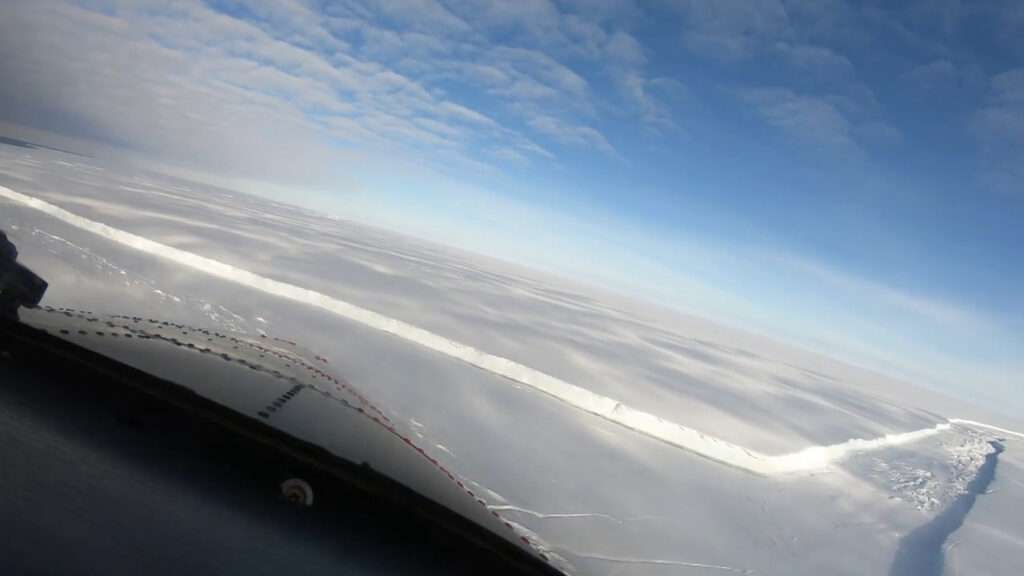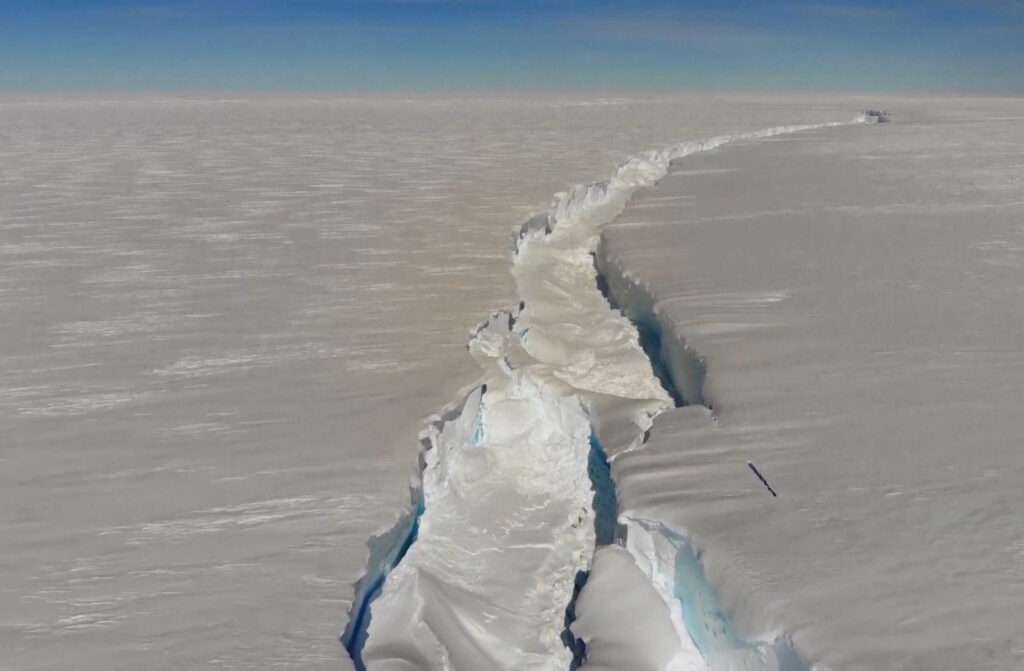Spectacular new footage shows the enormous crack in the Brunt Ice Shelf that has emerged since it was first revealed in January.
Just two weeks later, the crack has calved an iceberg the size of Greater London, as can be seen in this video from the British Antarctic Survey.
At the time the crack was revealed, the British Antarctic Survey confirmed that the huge iceberg was 1,550 kilometres squared after it had broken off the 150m thick Brunt Ice Shelf.
They said that the cracks had been developing naturally over the last few years but then suddenly extended across the entire ice shelf, causing the new iceberg to break free.
Iceberg formation, known as carving, happened in this case when a crack known as Chasm-1 fully extended through the ice shelf.
They said the break off is the second major calving from this area in the last two years and has taken place a decade after scientists at British Antarctic Survey (BAS) first detected the growth of vast cracks in the ice.

The Brunt Ice Shelf is the location of BAS Halley Research Station. BAS glaciologists, who have been monitoring the behaviour of the ice shelf, say that the area of the ice shelf where the research station is located currently remains unaffected by the recent calving events.
In 2016, BAS took the precaution of relocating Halley Research Station 23 km inland of Chasm-1 after it began to widen.
Since 2017, staff have been deployed to the station only during the Antarctic summer (between November to March).
Professor Dame Jane Francis, Director of BAS, said: “Our glaciologists and operations teams have been anticipating this event. Measurements of the ice shelf are carried out multiple times a day using an automated network of high-precision GPS instruments that surround the station.
“These measure how the ice shelf is deforming and moving, and are compared to satellite images from ESA, NASA and the German satellite TerraSAR-X.

“All data are sent back to Cambridge for analysis, so we know what is happening even in the Antarctic winter – when there are no staff on the station, it is dark for 24 hours and the temperature falls below minus 50 degrees C (or -58F).”
Professor Dominic Hodgson, BAS glaciologist, added: “This calving event has been expected and is part of the natural behaviour of the Brunt Ice Shelf. It is not linked to climate change. Our science and operational teams continue to monitor the ice shelf in real-time to ensure it is safe, and to maintain the delivery of the science we undertake at Halley”.



